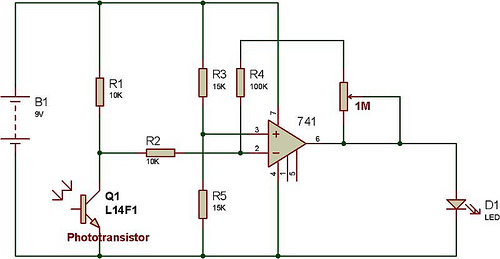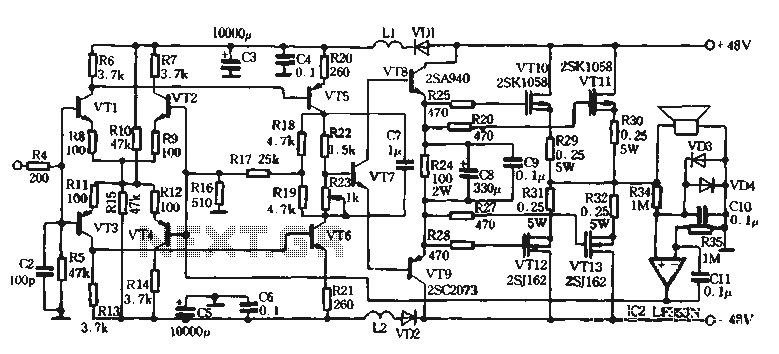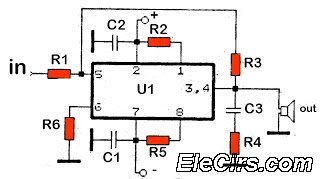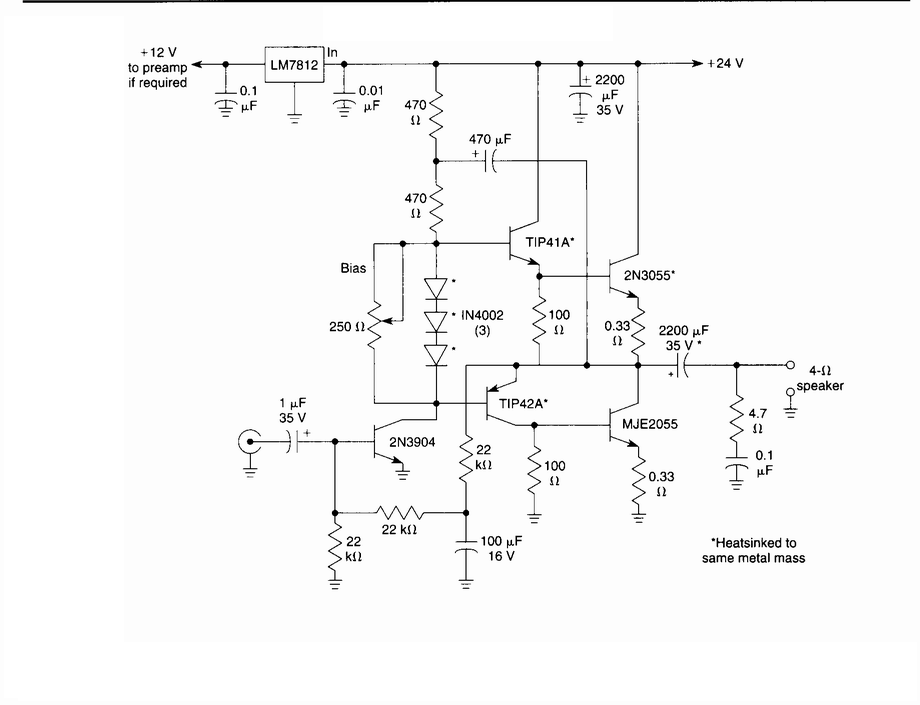
Wideband Rf Amplifier
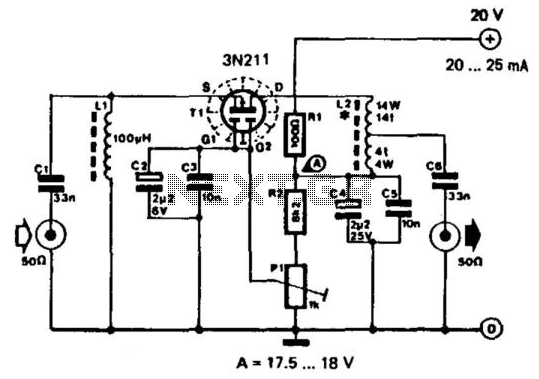
This RF amplifier features a wide bandwidth and dynamic range. It provides a gain of 10 dB, with a noise figure of less than 5 dB. The third-order intercept point (IP3) is -40 dB at an output of +22 dBm per tone. The operational bandwidth spans from 4 to 55 MHz.
The RF amplifier described is designed for applications requiring high-performance signal amplification across a broad frequency range. With a gain of 10 dB, it effectively boosts weak RF signals to a usable level, making it suitable for various communication systems. The low noise figure of less than 5 dB indicates that the amplifier introduces minimal additional noise to the signal, which is critical for maintaining signal integrity in sensitive applications.
The third-order intercept point (IP3) of -40 dB at +22 dBm/tone output is a key parameter that highlights the amplifier's linearity and ability to handle multiple signals without significant distortion. This characteristic is particularly important in environments where multiple channels operate simultaneously, as it ensures that the amplifier can maintain performance without generating unwanted intermodulation products.
The operational bandwidth of 4 to 55 MHz allows for versatility in applications, making this amplifier suitable for use in various RF systems, including telecommunications, broadcasting, and instrumentation. Overall, this RF amplifier is engineered to deliver reliable performance with a combination of gain, low noise, and robust linearity across its specified frequency range. This RF amplifier has wide bandwidth and dynamic range. It has a gain of 10 dB, noise figure less than 5 dB, and the third-order 1 MD is -40 dB at +22 dBm/tone output. The bandwidth is 4 to 55 MHz.
The RF amplifier described is designed for applications requiring high-performance signal amplification across a broad frequency range. With a gain of 10 dB, it effectively boosts weak RF signals to a usable level, making it suitable for various communication systems. The low noise figure of less than 5 dB indicates that the amplifier introduces minimal additional noise to the signal, which is critical for maintaining signal integrity in sensitive applications.
The third-order intercept point (IP3) of -40 dB at +22 dBm/tone output is a key parameter that highlights the amplifier's linearity and ability to handle multiple signals without significant distortion. This characteristic is particularly important in environments where multiple channels operate simultaneously, as it ensures that the amplifier can maintain performance without generating unwanted intermodulation products.
The operational bandwidth of 4 to 55 MHz allows for versatility in applications, making this amplifier suitable for use in various RF systems, including telecommunications, broadcasting, and instrumentation. Overall, this RF amplifier is engineered to deliver reliable performance with a combination of gain, low noise, and robust linearity across its specified frequency range. This RF amplifier has wide bandwidth and dynamic range. It has a gain of 10 dB, noise figure less than 5 dB, and the third-order 1 MD is -40 dB at +22 dBm/tone output. The bandwidth is 4 to 55 MHz.
